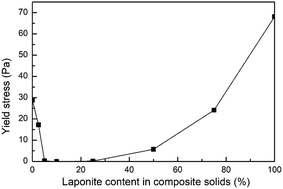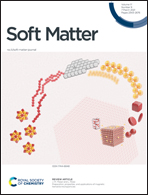Rod–plate interactions in sepiolite–LAPONITE® gels: microstructure, surface chemistry and rheology
Abstract
Pure and composite clay gels of sepiolite and LAPONITE® at 4 wt% solids were characterised microstructurally and rheologically. They all displayed time-dependent behaviour, i.e. yield stress increased with aged time. The microstructures captured by cryo-SEM on the samples prepared by high pressure and rapid freezing showed the presence of bonding between LAPONITE® sheets and sepiolite fibres. These bonds are likely to be formed between the positive sheet edge and the negative fibre silica face as suggested by the upright orientation adopted by most LAPONITE® sheets. The sheets formed isolated open networks at a low content and a continuous open network at a high content. The fibres of the pure sepiolite gel formed a relatively strong network. However, the composite networks formed at a low LAPONITE® content between 5 and 25% must be discontinuous as the yield stress is zero. At a higher LAPONITE® content, the composite structure displayed increasing strength. The time-dependent ageing behaviour is due to the electric double layer (EDL, face–face) repulsive force governing the development of the 3D network structure. The Leong model described this behaviour well. All the clay gels displayed a maximum yield stress at a pH of 9 to 10. Pyrophosphate additive reduced the maximum yield stress and shifted the yield stress-pH curve to a lower pH. The Herschel–Bulkley model described the flow behaviour of all the gels well. The variation of the model yield stress with gel composition is similar to that obtained by the vane yield stress technique.



 Please wait while we load your content...
Please wait while we load your content...